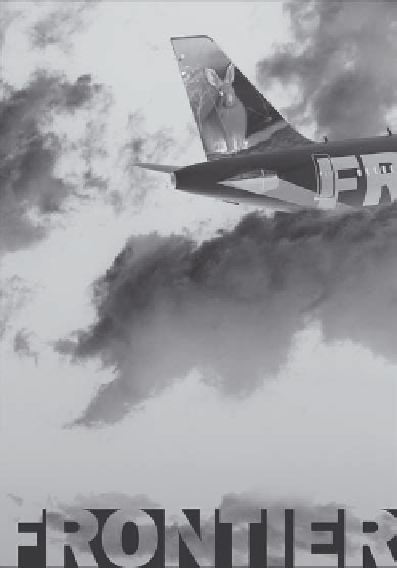Travel Reference
In-Depth Information
Direct Mail
Although postage costs have increased rapidly, direct mail either by e-mail or the Post Of
ce is one of
the most important advertising methods for tourism enterprises. It is the most personal and selective
of all the media; consequently, it is the most effective medium in minimizing waste circulation. Direct
mail gets the message directly to the consumers that one wishes to contact. Direct-mail advertising is
self-testing when it asks for a response.
The critical problem with direct mail is obtaining and maintaining the right mailing lists. Many
types of lists are commercially available through
firms specializing in this activity. (One source of such
information is Standard Rate and Data Service.)
For the tourism industry, previous visitors are the most important mailing-list sources. However,
names and addresses must be correct, and the lists must be kept in ready-to-use form on a computer.
Other good sources of prospects are the inquiry lists.
Television
Television presents both an audio and a visual message and comes as close to approximating personal
selling as a mass medium can. Television requires minimal exertion on the part of listeners and is very
versatile. However, television is not a
flexible medium, commercials have a short life, and advertising
on television is expensive relative to the costs of using other media. Nevertheless, despite television
s
expense, many destinations are using television and
finding it very cost effective. Cable television
provides many opportunities for tourism advertising.
'
Magazines
The major advantage of magazines is their print and graphic quality. Other advantages are secondary
readership, long life, prestige, and favorable cost per thousand circulation. Many special-interest
magazines reach specialized market segments effectively, making it possible to target markets.
Regional editions allow further selectivity, with a minimum of waste circulation. Some of the
unfavorable characteristics of magazines are that they require long lead times and that changes
cannot be made readily. Magazines also reach the market less frequently than do newspapers, radio,
and television.
Radio
Radio has the advantage of outstanding
ex-
ibility and relatively low cost. Although the
warmth of the human voice adds a personal
touch to the selling message, radio has the
disadvantage that it presents only an audio
message. Tourists driving in their automobiles
are typically radio listeners, and many attrac-
tions
find radio an excellent medium.
Frontier Airlines, a regional low-
cost carrier headquartered in
Indianapolis, Indiana, provides an
excellent case study on creative
advertising and branding.
Frontier's planes are unique in that
they have animals painted on their
tails. With this part of branding in
place, Frontier launched an
advertising campaign focusing on
Frontier being '' a whole different
animal.'' The multimedia
campaign covers TV, radio, print,
and the Web. The constant
message of Frontier is: Affordable
fares; newer, more comfortable
planes; wider seats; expanded
legroom; and DIRECTV service. Try
the airline with the animals on its
tails.
Photocourtesyof2005
FrontierAirlines,Inc.
Outdoor Advertising
Outdoor advertising has been usedwith great
success by many tourism organizations. It is
a
flexible, low-cost medium that reaches
virtually the whole population. It has made
the Wall Drug Store in Wall, South Dakota,
world famous. Outdoor advertising has the
disadvantage that the message must be
short; however, it does reach travelers. An
additional problem is highway signing laws,
which aremaking itmore dif
cult to advertise
tourism attractions.









Search WWH ::

Custom Search